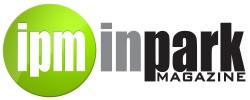Deerfield Beach, Florida, USA (PRWEB) — Recently the National Park Service made the decision to install over 2700 MSi iPAR 38 LED lights to illuminate the Liberty Bell located in Philadelphia, Pennsylvania. In 2003 the bell was moved into the new Liberty Bell Center, a glass and steel pavilion that allows it to be viewed by the public 24 hours a day, seven days a week. This new setting is perfectly suited for the kind of efficient, bright and long burning light provided by LEDs.
Cast with the lettering “Proclaim liberty throughout all the land unto all the inhabitants thereof,” this 2,000 lb. bell has stood as a symbol of American freedom for over 200 years. The National Park Service moved the Liberty Bell to its new home to allow easier viewing by the many visitors who come to see it each year. A special feature of the Liberty Bell Center is glass walls providing viewing of the bell both day and night. This is the ideal setting for LEDs that offer many advantages over traditional tungsten lights that had been previously used.
“First let me say how proud we are to be lighting the Liberty Bell,” said Bruce Johnson, MSi managing partner. “It is a great honor, but it is also a perfect place to show the many bonuses offered by our LED lights.”
LEDs offer many advantages over the tungsten halogen lamps traditionally found lighting important artifacts – chief among them are cost savings in energy and maintenance. LED lights consume far less energy and produce almost no heat meaning reduced cost for both electricity and cooling. Exhibit spaces will also realize savings in the costs of lamp replacement and the manpower that requires. In the situation found at the Liberty Bell Center the typical tungsten halogen light burning day and night will typically need replacement every two months. The equivalent LED light burning 24 hours a day will last up to 7 years.
Another big advantage to using MSi LEDs to light important artifacts is preservation. Many materials can suffer damage and fading as a result of long term exposure to the ultraviolet and infrared light waves that are produced by tungsten halogen lighting. The light emitted by LED’s contains neither of these harmful wavelengths that can result in damage to priceless historic artifacts.
“The color rendering index of our newest LED’s now meet or exceed that of the traditional tungsten halogen lighting,” added Johnson. “That means that museums and exhibit spaces like the Liberty Bell Center can now realize all the cost savings and preservation benefits of LED lighting and allow visitors to view objects and colors the way they were intended to be seen.”
About the company
Founded in 2000, MSi is dedicated to the design, development and manufacturing of application specific solid-state lighting products. With warehouse and distribution facilities in California and Florida, multiple site drop shipment requirements are facilitated on a complete and on-time cost efficient basis.
Cognizant of the rapidly changing developments and improvements of high performance white LED products, MSi maintains a strong ongoing relationship with CREE, a leading manufacturer of LED components. Product design, engineering, testing and rapid prototyping at their Florida headquarters provides the ability to develop and test products for quality and performance, allowing speed to market for specific application demands.






